Hi everyone,
It’s been a while since I wrote this series, but I’m here today with post 5 out of the 6 part series. So far we’ve covered understanding the role of an art director, building foundational skills according to the industry you want to enter, networking in today’s age, and the importance of personal projects. But today, we are talking about something that ties all of this together; building your portfolio.
Breaking into the industry as an art director series:
Learning about the role of an art director across industries.
Building your foundation: essential skills and knowledge for aspiring art directors.
Building your portfolio (today)
Defining your ‘success’ as an art director. (coming soon)
A lot of people have asked me how to get into art direction without a degree, and the reality is that no one has ever ever asked me what I studied or wanted to see my degree. Literally no one cares, unless you are interested in doing a masters degree. I went to fashion school and in hindsight, all school could offer me was the projects that I would end up making myself, receiving feedback and putting it in my portfolio. But most of the time, I didn’t end up putting school projects in my portfolio because I didn’t have as much creative freedom as I wanted. I would organise my own passion projects outside of school and put it in my portfolio.
School gives you the mentors, the feedback and guidance you might be seeking to go through the process, which is very important. However, in the current age of the internet there a lot of ways to get this feedback somewhere else. If you don’t have the funding to move to the big capitals for fashion/art/advertising school, there are a lot of ways to build your portfolio anyways. I touched upon this in my previous article on passion projects.

But just to repeat for those wanting to break into the industry, your degree doesn’t matter for your first job. All people look at is your portfolio and your personality and willingness to learn. What I do have to say is, sometimes you are mandatory to be part of a school program to do an internship, but I think it is possible to get your foot in the door without one.
Let’s get started on how to build your portfolio.
This is a free post, but consider upgrading to a paid subscription to receive personal mentorship on guided art direction briefs, receive an extra in-depth post every Sunday, and get access to guides like Every Place You Can Work At as an Art Director, A list of Art Direction Inspiration Resources, an insight to what art directors actually earn, a list of industry insights I’ve learned over the years and much more valuable content that can help build your foundation or grow where you are currently at.
Next week I am also kicking off the first 30 days course for paid subscribers on how to craft your DNA as an art director, that can be extremely helpful when navigating the industry and building your portfolio and career path.
What makes a strong portfolio?
“But I don’t have many projects to put in.”
Your portfolio isn’t meant to be an archive of everything you’ve ever done. A strong portfolio prioritises quality over quantity. Personally, I only include about 20% of the work I’ve done in my portfolio. This is because much of my work doesn’t align with the type of projects I want to attract, the outcome didn’t feel like me, or it simply became outdated.
Curating a portfolio takes time and careful consideration. It’s far better to have 4 to 8 strong projects than dozens of average ones. You don’t need to include every social post you made for clients, every school project you completed, or experiments from your free time. Including too much can distract from the standout work that showcases your abilities and strengths.
Versatility vs. niche
One of the biggest questions when building your portfolio is whether you want to position yourself as a niche art director or a versatile one.
Many aspiring art directors I’ve spoken to dream of working with big luxury brands, making a creative impact, and being involved in large-scale shoots and films. The reality is that you probably won’t be doing that straight away. Early in your career, showing versatility might be more important because you’ll often work on smaller projects or support senior creatives with activations, social content, or pop-ups. Demonstrating that you can handle a variety of tasks while still leaving your unique stamp on them is a strength that creative directors and recruiters look for in juniors.
For example, when I started out, my portfolio was a mix of personal and student projects. I included illustrations, social content, big ideas, and activations, all rooted in Gen Z insights and related to subcultures and fashion. This mix of versatility and originality helped me land my first brief as a junior freelance art director for Tommy Jeans. That led to work with Nike, Tommy Hilfiger, and later Jimmy Choo and Adidas.
If you want to enter a specific industry, such as luxury fashion or advertising, the key is to get your foot in the door, earn the title of art director, and build from there. My first job was in social media, something I didn’t want to pursue long-term, but it gave me valuable experience, helped me build my portfolio, and eventually led to bigger opportunities. It doesn’t matter if it is at a start-up, a local bakery or PR agency. You will learn loads in your first job as an art director, because you learn how to sell ideas and adapt it to clients needs. Even if you stay just under a year, you have earned that title and it will be easier to get that next job closer to your end goal when you combine it with your passion projects.
So, what to include in your portfolio?
Your portfolio typically has a homepage, an about page and a contact page. You can also create a separate project page if your homepage isn’t your project page and an additional one if you want to show something you do next to art direction that could be relevant. I personally have a page with photography and my newsletter.
About page: a short bio with your name + where you are based and what you do. If you are not an art director yet, don’t say ‘aspiring’, just say you are an art director or junior art director. Include a photo of yourself, it doesn’t have to be a professional headshot, but something that clearly shows what you look like. Don’t make this text too long, people won’t read it. Just 1 short paragraph is fine. You could add a link to your CV or note down some achievements, education, previous relevant jobs in bullet points or select clients.
Homepage/landing page: Many creatives have their project overview as their landing page and I would say that is perfect. Make sure the landing page is interesting, it could either show the different categories you have. So like mine, art direction, photography, newsletter. But it can also show the types of art direction ‘social, campaign, editorial’ as an example. Make sure it looks aesthetically pleasing and not too complicated.
Project overview: this can be your landing page, and I recommend doing that. Although your project overview page should highlight in one overview what projects you work on. This could either be a side bar with the project names written out, or a grid of images/gifs that gives a visual overview of the projects.
Contact page: I have my email clearly stated on my about page, so a contact page is not very necessary. You can also put your email and social links to your footer additionally, but never ever ever use a contact form. Often you are not able to add attachments, some people use email programs so they often just don’t end up emailing you and it looks unprofessional. Just only write down your email and keep it simple.
Extra pages: some creatives/art directors add a page to show their passion outside their job title, something unrelated to client work but still creative. I have a page with my photography, not because I want to be booked as a photographer (unless you want to, you can ofcourse!) but to show my ability of composition, editing, production and any skill that comes with it. Or simply how you view the world. This can be anything from your favourite playlist, collages, written words, images, ceramics, the list goes on. I often find it very fun to see what people are into and get a glimpse of their personality and what they create when it is not for a client.

What to include on your project page?
The project overview page leads to the individual projects. I often get asked what to include in your portfolio, and I would say as much as needed to make it feel like a body of work and impactful, but not what distracts from the actual work and makes it too lengthy. Each project page should tell a story.
Text:
Start with the concept name. Outline the client (or if it is fictional, say fictional concept or mock-up project for xxx). If needed, write the company you worked for and then your role. So that can be simply art director, but you can also write down supporting creative, social content, concept development, etc.
Then you go into what the concept is about. It is important to keep this short and let the visuals do the talking. For example, you could simply write ‘insight: ….” “solution: ….” which is the idea. You can also write it up as one text, but not too lengthy. If more people involved, write the main credits underneath.
Highlight what it is: a 360 campaign, a pop-up event, a poster series etc.
Visual:
It is important to make your project feel as visually impactful as you can and bring it to life. Let’s say you created or art directed a poster design, then you don’t just show the posted design on its own. You would show it in context, even if it didn’t actually look like that in real life. Mock-ups of the poster at metro-stations, on the streets, held by a persona, etc. A great example below of graphic designer Jim Kuhnel with a very visually impactful portfolio.
You could show an insight into your process, but beware with showing mood boards referencing work of other people. This can be sketches, try-outs, outtakes that didn’t make the final selection or nice BTS photography.
Portfolio formats
A digital portfolio is a must, something that is easily accessible with a link. I wouldn’t bother doing a physical portfolio anymore, as it costs a lot of money and time and isn’t easy to update. If you are shy and starting out and don’t want to share your website with the world, you can make it password protected but make sure to clearly communicate the password when sending it out. What also works is doing a google slides document (view only) and sharing the link, this way you don’t need to host a portfolio website and you can easily curate your work.
I personally have a portfolio website hosted on cargo collective, but also have a pdf with some unpublished projects that I am proud of and represent my vision (unfortunately not every project sees the light of day).
Some platforms I recommend are:
Cargo Collective I love this website, because it has amazing templates and can make your portfolio look professional and clean/modern very easily. Some things can be a bit of a pain, but overall there is a tutorial for everything and it is fairly easy to use. They also have a great community where you can view other people’s portfolio to get inspired.
Squarespace: Also a very easy platform to create a portfolio by using one of their templates, very user friendly and easy to update your work. I can sometimes feel a bit restricted by their layouts, because I like to play with the design a bit more but it’s probably the best option when starting out.
Behance: This is a platform from Adobe and I recommend this over Adobe Portfolio (because it is impossible to transfer your existing portfolio to a new Adobe account, which might happen a few times in your life switching from your uni subscriptions, to personal, to work etc.). Behance allows you to upload your projects and have an overview. You can’t really personalise it much, but it does its job.
Instagram: I’ve seen more and more creatives switching to curating their Instagram as a portfolio and showcasing their work. I honestly find most of the photographers, stylists and designers I like to work with on Instagram because it is a great tool to discover new talent. Some people use it as their only way to show their work, but I’d recommend to do both a website and this since a website allows for more curation. (Note to self: post more of your work on Instagram).
Portfolio insights to keep in mind
There are a few things I’ve picked up about portfolios along the way, from speaking to recruiters, hearing feedback, and my own Google Analytics.
People don’t spend much time on your portfolio. Most of the time I can see there is an average scroll of 3 seconds on my project overview page, without actually clicking on the project itself. Meaning they just like to get a taste of what I worked on and what it looks like without going into too much detail. So make sure your project overview page looks appealing and professional.
Recruiters, especially for more junior roles, ask in interviews about your role in the project. Especially bigger projects are 99% of the time not done alone, and everyone knows that. Don’t make it seem like you did it by yourself. Mention your role or responsibilities within the project or a credit list of the rest of the team.
Include only your best pieces, leave out anything that doesn’t match your current skill level anymore.
Keep the design clean and minimalistic. Don’t overdo it, but let the focus be on the beautiful visuals and ideas rather than the design of the website. When the design is too much, people click away when the page doesn’t load and you’ve lost a potential job.
Make your website responsive. A lot of recruiters or creative directors get send portfolios and look at them on their mobile phone, when your website can only be accessed on desktop, it becomes a thing on someone’s to do list and they forget about it.
Your portfolio is more than just showing everything you worked on, it is a reflection of you as an art director and more important than the companies you worked for or the degree you have. Take the time to curate it thoughtfully, focus on quality, and let your unique perspective shine. Remember, your portfolio isn’t static, it should grow and evolve with you. I recommend doing a portfolio review at least once in your life, there are several recruiters, creative directors, universities or mentoring platforms that host paid ones. It’s often not that expensive but definitely worth the investment if you feel lost.
In the final part of this series, we’ll dive into what success means as an art director and how to define it on your own terms. From navigating client expectations to balancing creative satisfaction, we’ll explore how to create a career that feels fulfilling and authentic to you.
As always, feel free to reach out with questions or share your thoughts. The Art Direction chat is also always open to chat with other creatives, perhaps to host a little portfolio review or share yours with each other.
Love,
Zoë





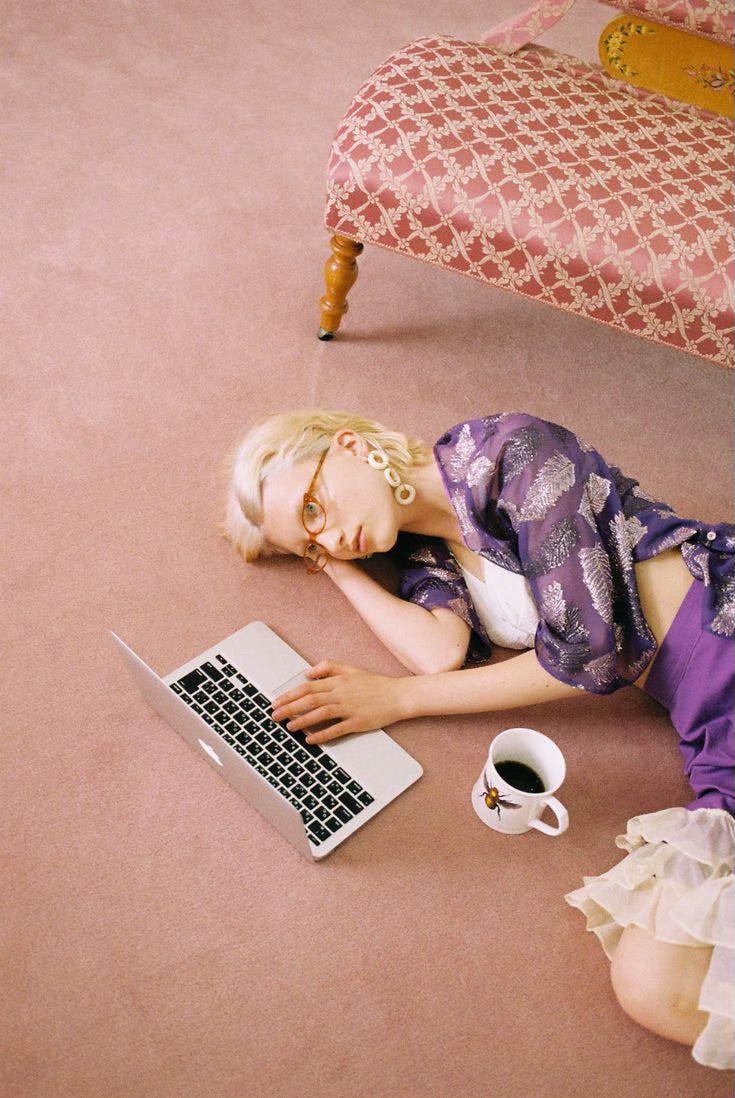
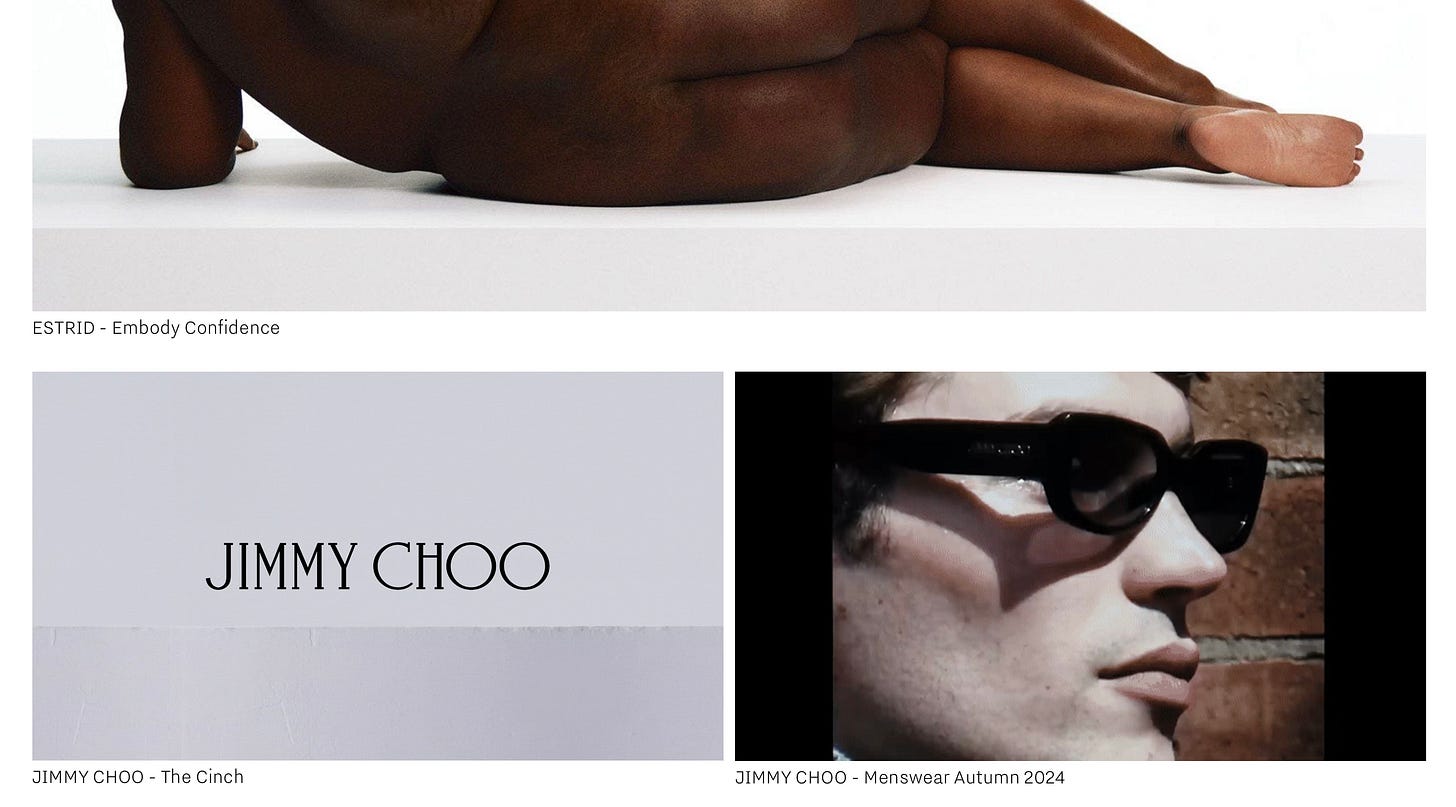
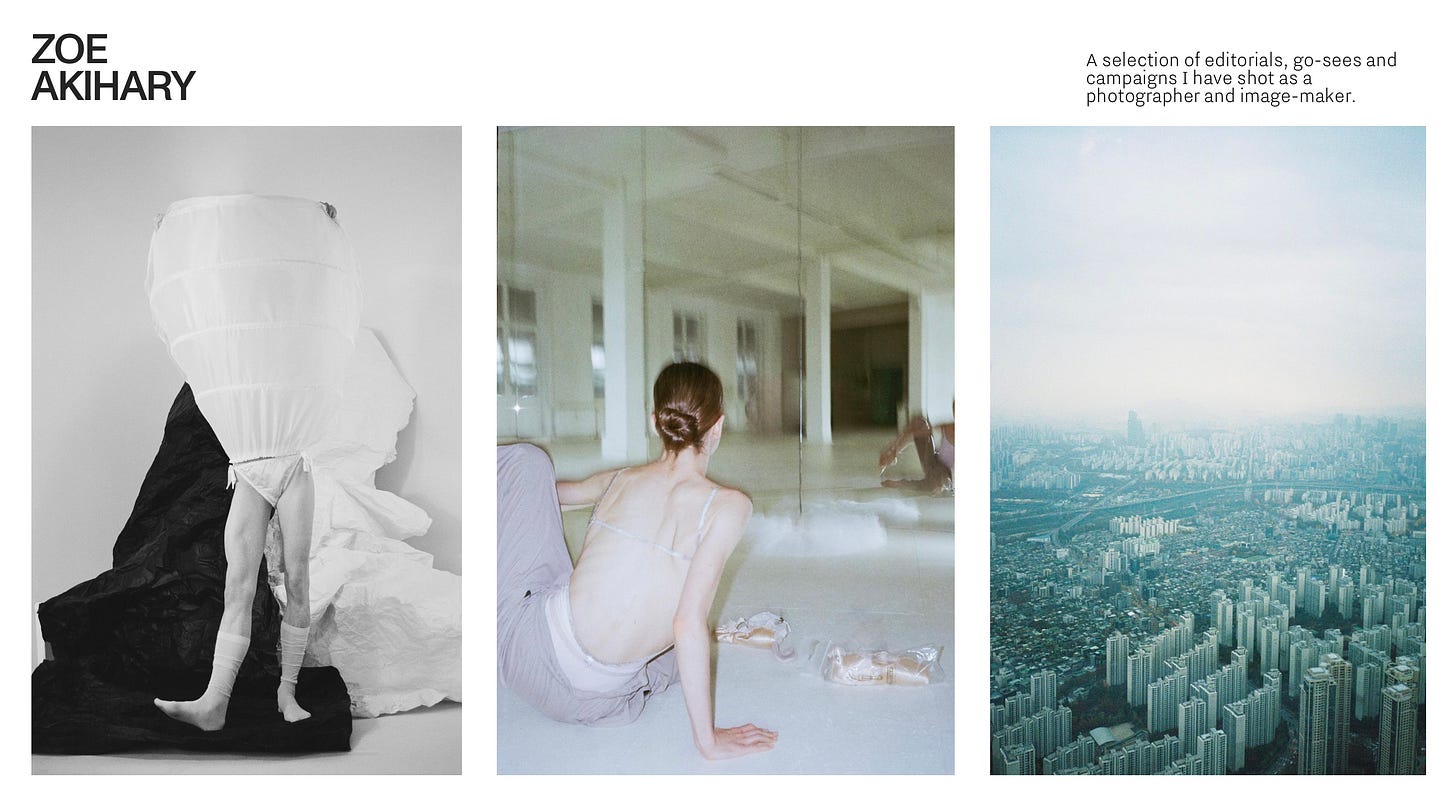

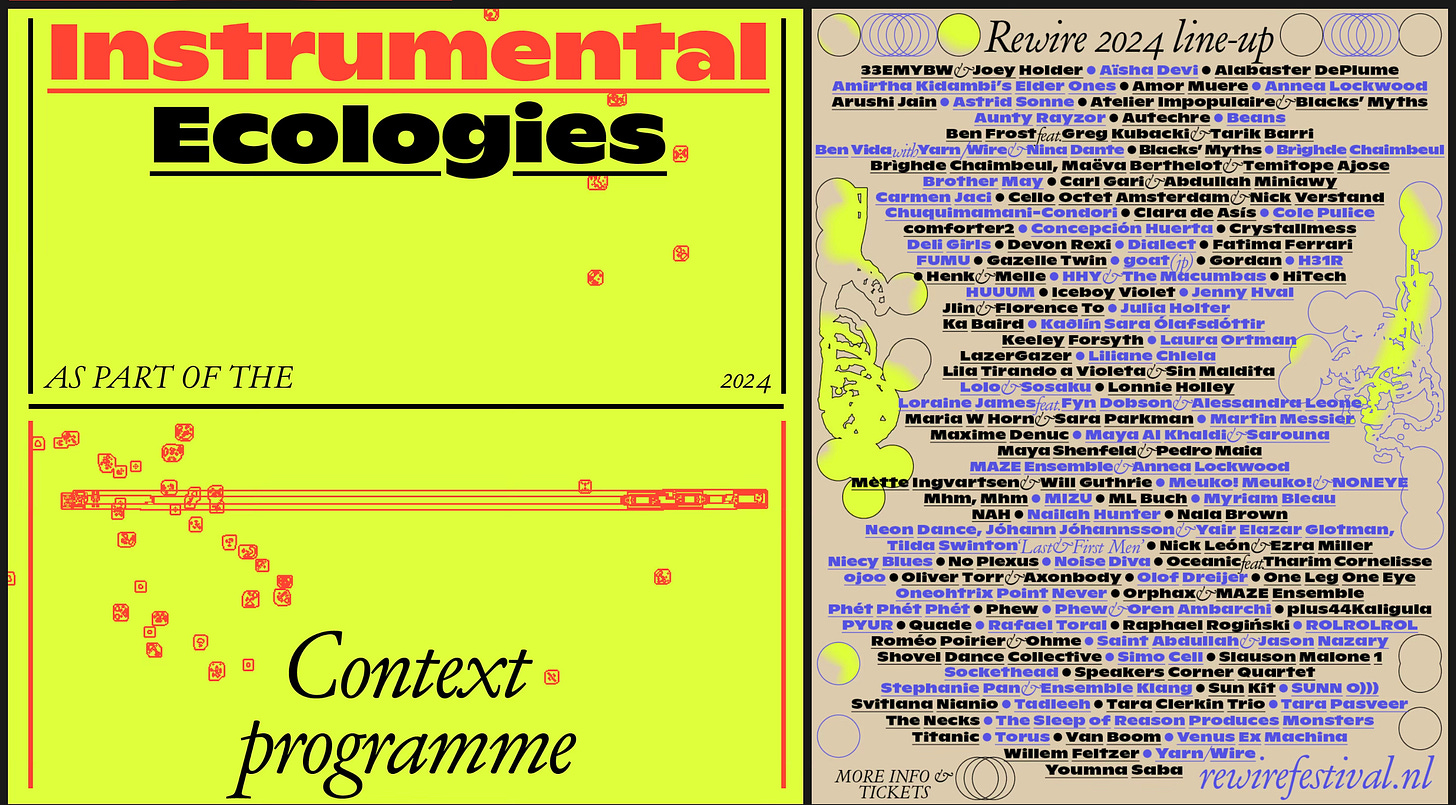
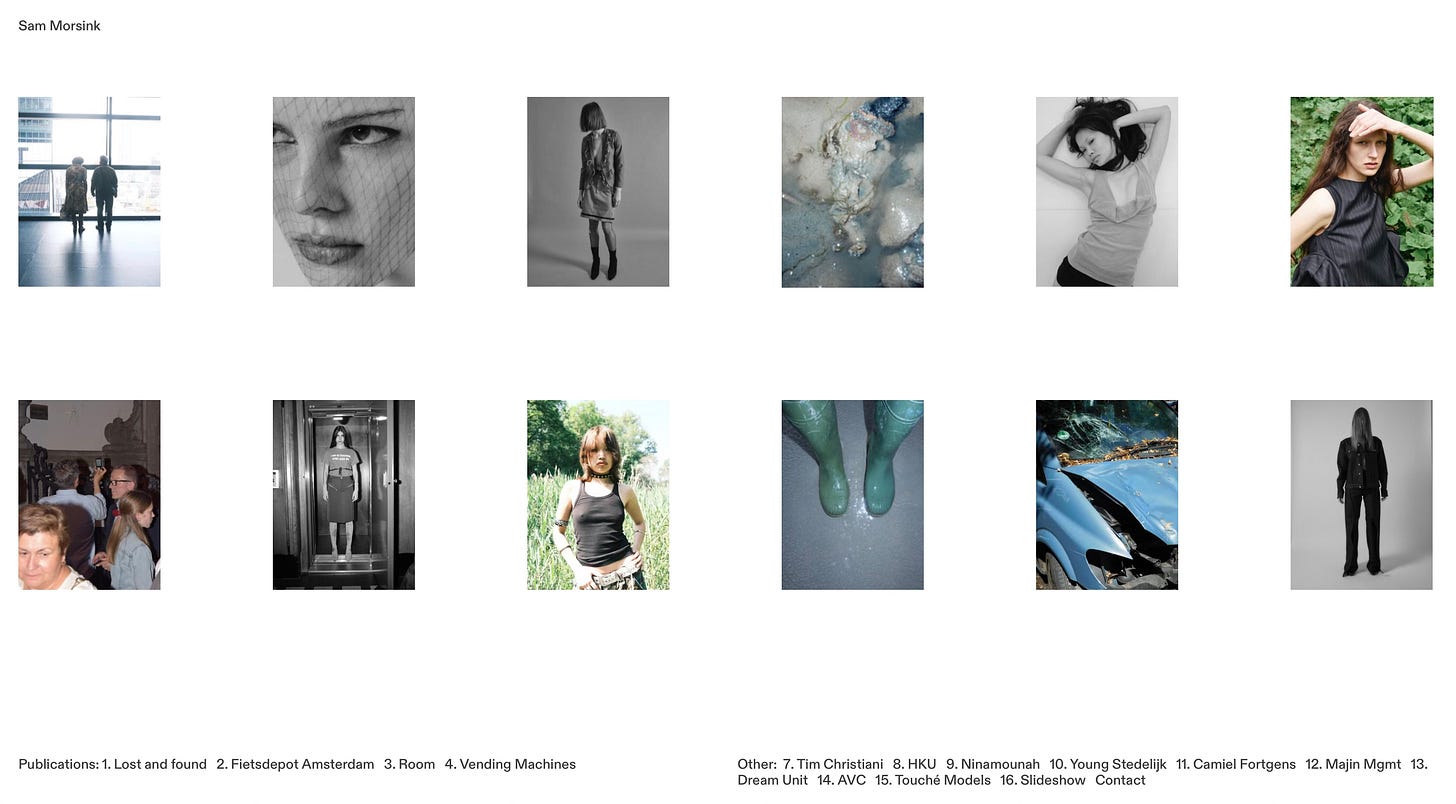


Hey Zoe, I loved this post. I’ve been working in the fashion industry, but on the corporate strategy side (in-house and as a consultant) and I really want to pivot into art direction/creative consulting. I’m doing graphic design, branding and photography styling courses at the moment, but I’ve only just started them and don’t have any work I’d want to include in a portfolio yet.
To start out, would you recommend to pursue some personal projects and then just keep reaching out for freelance work?
this is too good